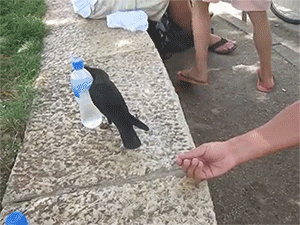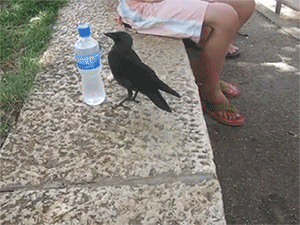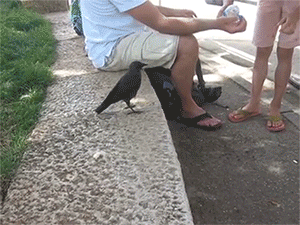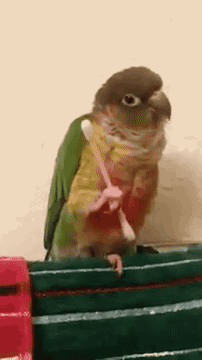Cognition - Tumblr Posts

Not every tear is created alike, a fact well understood by biologists. Chemically speaking, the tears produced when slicing onions or encountering a speck of dust in your eye differ significantly from those shed in response to intense emotions such as empathy, compassion, pain, or overwhelming feelings. Termed "emotional tears," the latter contain higher levels of stress hormones and natural painkillers, contributing to the cathartic sensation experienced during a heartfelt cry.
Now researchers at Weizmann Institute of Science in Rehovot, Israel, have shown the story is even more dramatic. They found in experiments with rodents that female tears contain chemicals that block aggression in men.
(via Sniffing Women's Tears May Reduce Aggression in Men, Study Finds | Smart News)

What do whale experts and alien hunters have in common? More than you might expect.
In the vast depths of the ocean, the language of humpback whales unfolds like an enigmatic tale, potentially as inscrutable to us as the communication methods of an alien race from a distant planet. The intricate songs and patterns that characterize their linguistic repertoire might hold the key to unlocking a profound connection not just with these majestic marine beings but also with intelligent extraterrestrials, should we ever encounter them. In a momentous stride towards unraveling the secrets of interspecies communication, scientists recently embarked on a groundbreaking 20-minute conversation with a humpback whale named Twain.
(via Humans May Have to Talk to Aliens One Day and Are Practicing on Whales)
In a recent study, it was revealed that apes, our closest living relatives, exhibit the remarkable ability to recognize both family members and long-lost friends even after enduring decades of separation. The investigation involved 26 captive chimpanzees and bonobos sourced from various zoos globally. These primates were presented with images depicting former groupmates alongside pictures of unfamiliar apes. The results not only validated but also provided concrete evidence for what primatologists have long conjectured regarding the cognitive capacities of these intelligent creatures.
(via Chimps and bonobos recognize friends, relatives they haven't seen in decades : NPR)
Useful and informative, I couldn't help but reblog.
Sharing this here too



I do not usually make posts like this but recently I have seen a lot of content on Instagram, Twitter and I think tiktok too misunderstanding the meaning of intrusive thoughts, which may cause people experiencing them to be upset.
I have tried to shortly explain the difference of impulsive and intrusive and hope it will help people to understand and use the words correctly.
Reblogs are very much appreciated!
The Gestalt Principle: Why The Whole Is Greater Than the Sum of Its Parts Shaina Tranquilino April 23, 2024

In the realm of perception and cognition, the Gestalt principle stands as a testament to the interconnectedness and complexity of human experience. Coined by German psychologists in the early 20th century, this principle suggests that the whole is greater than the mere sum of its individual components. From visual illusions to problem-solving, the Gestalt principle illuminates how our minds organize and interpret the world around us.
Understanding the Gestalt Principle: At its core, the Gestalt principle emphasizes that our perception goes beyond the simple combination of individual elements. Instead, we tend to perceive objects as unified wholes, often emphasizing patterns, relationships, and structures. This principle manifests across various domains of human experience, offering insights into psychology, art, design, and even organizational behaviour.
Visual Perception: In visual perception, the Gestalt principle explains phenomena such as figure-ground relationship, proximity, similarity, closure, and continuity. For instance, when we look at a complex image, our minds effortlessly organize it into meaningful shapes and forms, prioritizing coherence and completeness. This innate tendency to perceive wholes rather than parts highlights the efficiency and sophistication of our visual processing.
Art and Design: Artists and designers leverage the Gestalt principle to create compelling compositions that captivate the viewer's attention. By understanding how elements interact within a visual field, creators can manipulate perception to evoke specific emotions and convey particular messages. Whether through balance, contrast, or alignment, the Gestalt principle serves as a guiding principle in the creation of aesthetically pleasing and impactful artworks.
Problem-Solving and Creativity: Beyond perception, the Gestalt principle influences our problem-solving abilities and creative endeavors. When faced with a complex challenge, we often seek to understand the underlying patterns and relationships, allowing us to grasp the bigger picture. By recognizing how individual elements contribute to a larger whole, we can devise innovative solutions and approach problems from novel perspectives.
Psychological Insights: On a psychological level, the Gestalt principle sheds light on how we perceive ourselves and others within social contexts. We tend to categorize individuals based on overarching traits and characteristics, forming impressions that extend beyond mere summations of their attributes. This holistic perception influences our interactions, relationships, and societal dynamics, emphasizing the importance of considering the whole individual rather than isolated traits.
Organizational Dynamics: In the realm of organizational behavior, the Gestalt principle informs our understanding of group dynamics and teamwork. Successful teams prioritize collaboration and synergy, recognizing that the collective effort often yields results greater than the mere aggregation of individual contributions. By fostering a culture that values cohesion and shared goals, organizations can harness the power of the Gestalt principle to drive innovation and productivity.
The Gestalt principle serves as a cornerstone in our comprehension of perception, cognition, and human behaviour. It reminds us that the whole is not simply the sum of its parts but a complex interplay of relationships and patterns that transcend individual elements. Whether in art, problem-solving, or organizational dynamics, embracing the Gestalt principle empowers us to perceive the world with greater clarity and harness the inherent synergy of interconnectedness.
You probably know that humans can experience “phantom limbs,” but did you know that the limbs of an octopus can have a “phantom body”? If you cut off an octopus’ tentacle, it will try to feed a mouth that is no longer there. A severed octopus tentacle also curls up when it’s exposed to negative stimuli like acid. Essentially, if an octopus dies and its tentacle is cut off, the tentacle can outlive the original animal by a whole hour.
Octopi have as many as 130 million neurons, but the vast majority are located in their limbs, not their brains. Their mind is “distributed.” That is fundamentally unlike the human mind. We have muscle memory, but our arms can’t move completely independently of our brains.
What does this mean for octopus consciousness? Well… we don’t know. There’s no way to observe or deduce via experiment what it’s like to be a particular animal. We can see how they behave, but we won’t ever see the world through their eyes. Science can study what is outside, but not what’s inside. So, animal consciousness isn’t really the domain of science.
As is always the case, philosophers have attempted to do what scientists cannot. The philosopher Peter Godfrey-Smith has a really great way of explaining what’s at stake: “Octopuses let us ask which features of our minds can we expect to be universal whenever intelligence arises in the universe, and which are unique to us.” There’s a decent chance you’ve seen a popular Tumblr post about Umwelt Theory—the idea that animals have access to senses that we do not. Smells too refined for our noses, pitches too high for our ears, colors outside the range of our eyes. But the inner worlds of animals might be even stranger than that. The postmortem movement of octopus limbs suggests that some animal minds might be fundamentally different from ours. Simply put, it’s not just that some animals have access to sensations that we will never feel. They might have access to types of thoughts that we will never be able to think.








